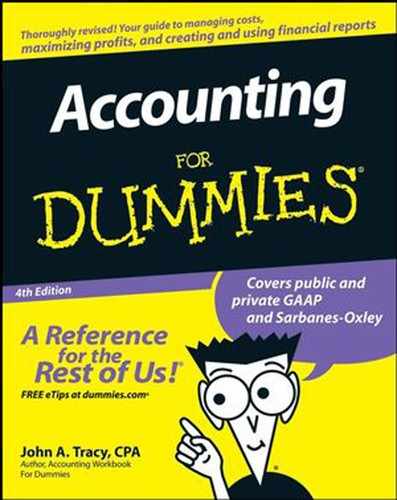12.8. Statement of Changes in Owners' Equity
In many situations, a business prepares a "mini" financial statement in addition to its three primary financial statements (income statement, balance sheet, and statement of cash flows). This additional schedule is called the statement of changes in owners' equity. You find this schedule in almost all public companies, because most have relatively complex ownership structures and changes in their equity accounts during the year. Many smaller private companies, on the other hand, do not need to present this schedule.
NOTE
Owners' equity consists of two fundamentally different sources: capital invested in the business by the owners, and profit earned by and retained in the business. The specific accounts maintained by the business for its total owners' equity depend on the legal organization of the business entity. One of the main types of legal organization of a business is the corporation, and its owners are stockholders. A corporation issues ownership shares called capital stock. The title statement of changes in stockholders' equity is used for corporations. (Chapter 8 explains the corporation and other legal types of business entities.)
Let's consider a situation in which a business does not need to report this statement, to make clearer why the statement is needed. Suppose a business corporation has only one class of capital stock (ownership shares); it did not issue any additional capital stock shares during the year; and it did not record any gains or losses directly in its owners' equity during the year (due to other comprehensive income, which I explain in a moment). This business does not need a statement of changes in stockholders' equity. In reading the financial report of this business you would see in its statement of cash flows (see Figure 6-1 or 6-2, for example) and its footnotes whether the business raised additional capital from its owners during the year, and how much cash dividends (distributions from profit) were paid to the owners during the year. In other words, the statement of cash flows and footnotes report all the activity in the owners' equity accounts during the year. Even so, a business may go ahead and prepare the schedule in order to bring together everything affecting its owner's equity accounts in one place.
NOTE
In contrast, many larger businesses — especially publicly traded corporations — generally have complex ownership structures consisting of two or more classes of capital stock shares; they usually buy some of their own capital stock shares; and they have one or more technical types of gains or losses during the year. So they prepare a statement of changes in stockholders' equity to collect together in one place all the changes affecting the owners' equity accounts during the year. This particular statement (that focuses narrowly on changes in owners' equity accounts) is where you find certain gains and losses that increase or decrease owners' equity but that are not reported in the income statement. This is a rather sneaky way of bypassing the income statement.
Basically, a business has the option to skirt around the income statement and, instead, report certain gains and losses in the statement of changes in owners' equity. In this way, the gains or losses do not affect the bottom-line profit of the business reported in its income statement. You have to read this financial summary of the changes in the owners' equity accounts to find out whether the business had any of these technical gains or losses, and the amounts of the gains or losses.
NOTE
The special types of gains and losses reported in the statement of stockholders' equity (instead of the income statement) have to do with foreign currency translations, unrealized gains and losses from certain types of securities investments by the business, and changes in liabilities for unfunded pension fund obligations of the business. The term comprehensive income is used to describe the normal content of the income statement plus the additional layer of these special types of gains and losses. Being so technical in nature, these gains and losses fall into a twilight zone, as it were, in financial reporting. The gains and losses can be tacked on at the bottom of the income statement, or they can be put in the statement of changes in owners' equity — it's up to the business to make the choice. You see it done both ways in financial reports.
The general format of the statement of changes in stockholders' equity includes
A column for each class of stock (common stock, preferred stock, and so on)
A column for any treasury stock (shares of its own capital stock that the business has purchased and not cancelled)
A column for retained earnings
One or more columns for any other separate components of the business's owners' equity
Each column starts with the beginning balance and then shows the increases or decreases in the account during the year. For example, a comprehensive gain is shown as an increase in retained earnings, and a comprehensive loss as a decrease.
I have to admit that reading a statement of changes in stockholders' equity in a public company's annual financial report can be heavy lifting. The professionals — stock analysts, money and investment managers, and so on — carefully read through and dissect this statement, or at least they should. The average, nonprofessional investor should focus on whether the business had a major increase or decrease in the number of stock shares during the year, whether the business changed its ownership structure by creating or eliminating a class of stock, and what impact stock options awarded to managers of the business may have had.
